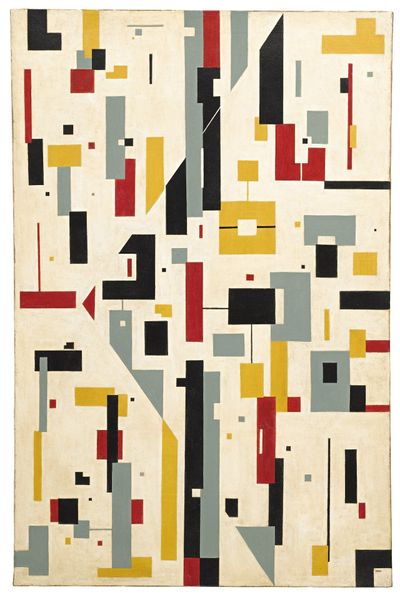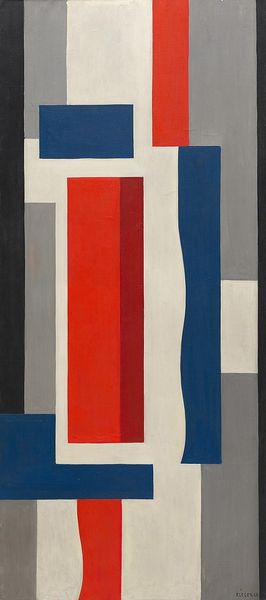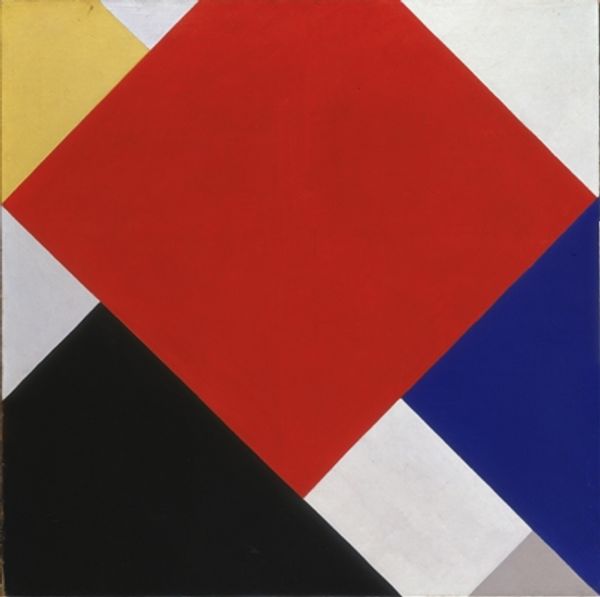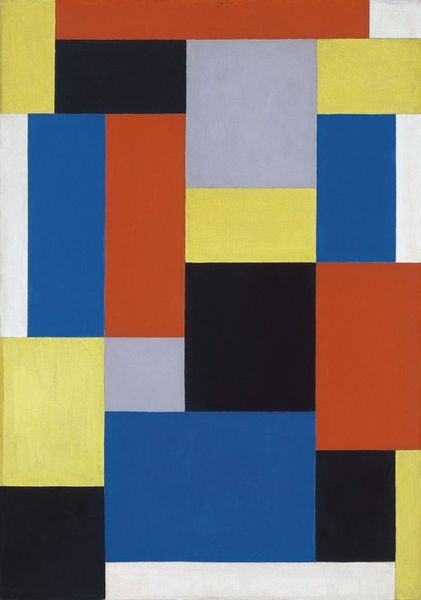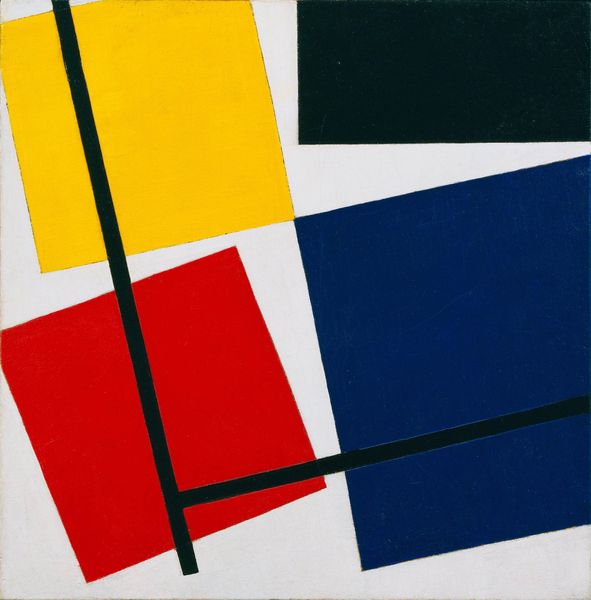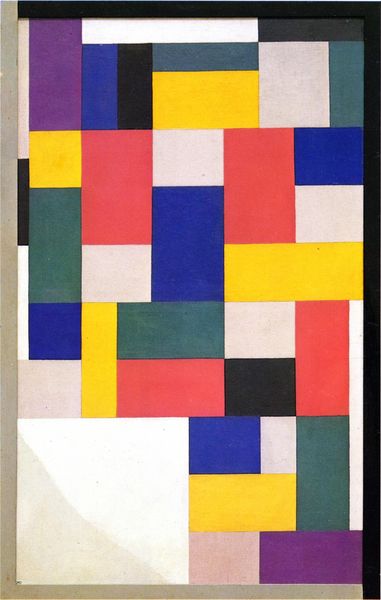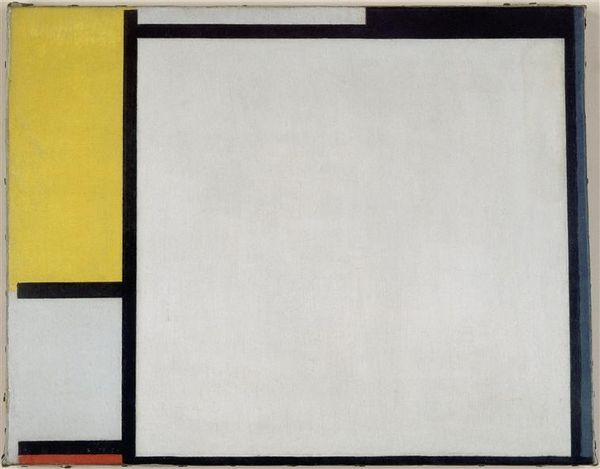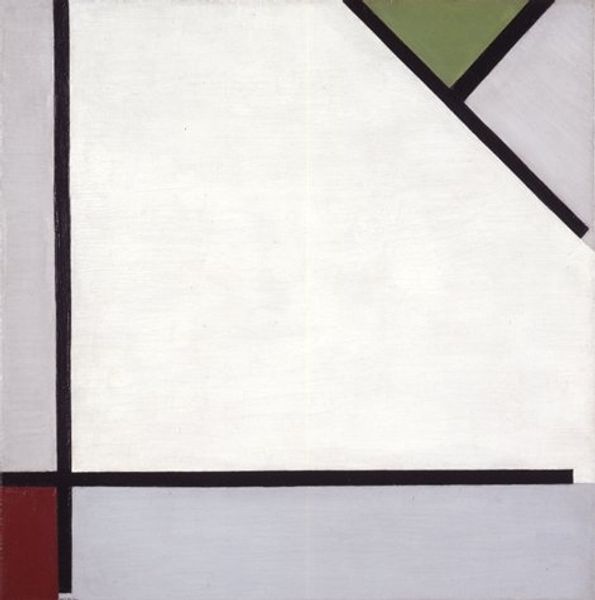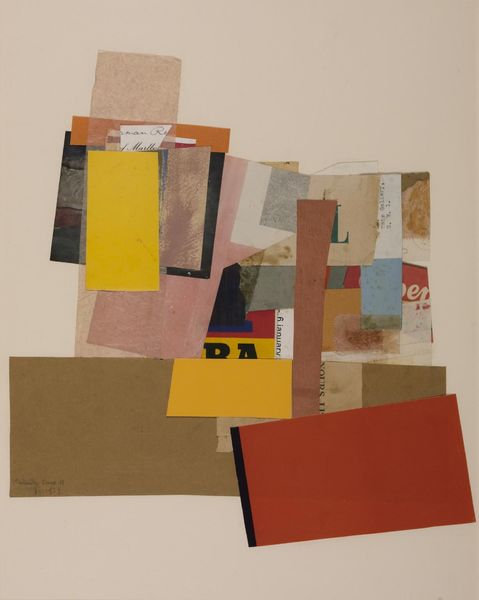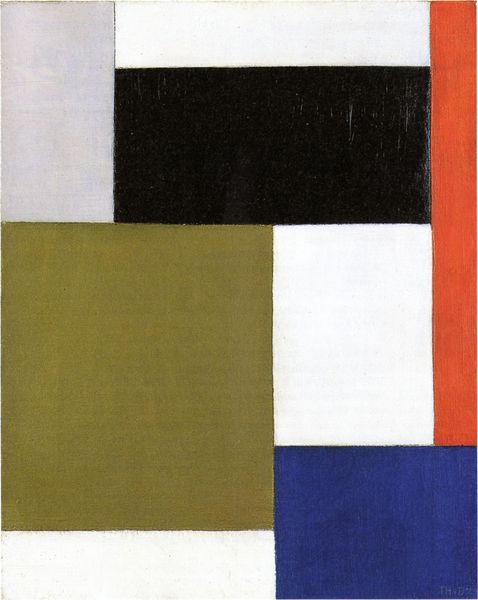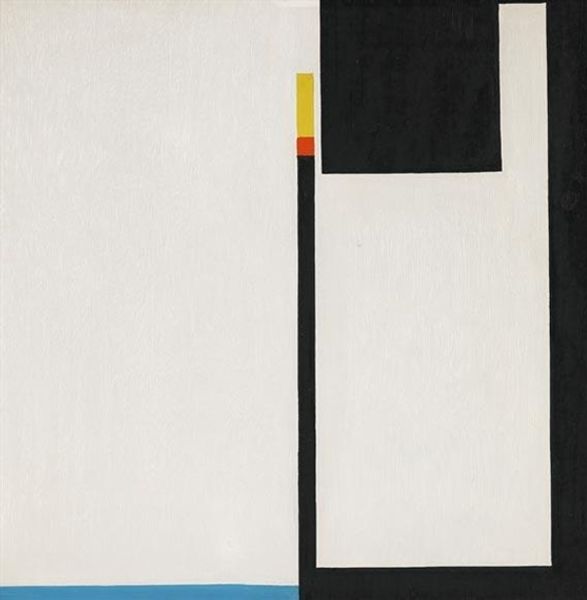
painting, oil-paint
#
abstract-expressionism
#
non-objective-art
#
painting
#
oil-paint
#
geometric composition
#
form
#
geometric pattern
#
geometric
#
geometric-abstraction
#
line
#
hard-edge-painting
Copyright: Fritz Glarner,Fair Use
Curator: Let’s turn our attention to Fritz Glarner’s “Relational Painting #65,” dating from 1953. The medium appears to be oil on canvas. What strikes you first about its composition? Editor: The painting feels constrained, almost claustrophobic, with those rigid blocks of color pushing against each other. It reminds me of urban planning, but without any visible infrastructure or space for actual people. Is that intentional, do you think? Curator: The intention, as I see it, is precisely to explore the pure relationships between forms. Glarner employed geometric abstraction as a visual language, focusing on the interplay of horizontal and vertical lines, and limiting his palette—ostensibly to assess color relations as an absolute construction. Look at the varying shades of white, strategically applied to offset the vibrancy of the primary colors. Editor: While I appreciate the controlled aesthetic, one must wonder about the politics of this so-called neutrality. Was this retreat into form a conscious turning away from the social upheavals of the post-war era? Could these geometric divisions symbolize a sort of detached view? The cold war anxieties manifesting in abstract art form? Curator: Your point is taken. Yet, I’m not certain we can easily project contemporary social theories onto Glarner’s project. It’s vital we give credit to how, technically, each plane intersects. Notice the weight afforded to positive and negative space, with edges being sharply rendered, thereby reinforcing structure. Editor: But by ignoring those external forces, are we overlooking ways the artwork might unwittingly replicate societal norms of division? Or perhaps, does it echo post-war aspirations of streamlined uniformity in housing and urban renewal initiatives? The black lines give pause in relation to questions of the architectural or societal grid. Curator: Such readings are compelling, to be sure. Still, what I admire about "Relational Painting #65" is the artist’s dedication to exploring the core principles of visual organization. His visual economy of geometric parts remains a tour de force within minimalist theory. Editor: Perhaps what's compelling is seeing how seemingly "objective" abstraction can spark dialogue regarding power structures and their aesthetic manifestations.
Comments
No comments
Be the first to comment and join the conversation on the ultimate creative platform.

